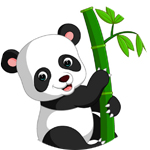听一篇优美的童话,陪伴孩子进入梦乡。这些睡眠故事是我们精心选编的一套3岁以上的睡前童话故事。这里的每一篇童话和故事都非常生动有趣,而且大部分是获奖的名篇名作,对孩子的成长很有益处。
Listen to a beautiful fairy tale and accompany your children to sleep. These sleep stories are a set of fairy tales before going to bed for over 3 years old carefully selected by us. Every fairy tale and story here is very lively and interesting, and most of them are award-winning masterpieces, which are very beneficial to the growth of children.

